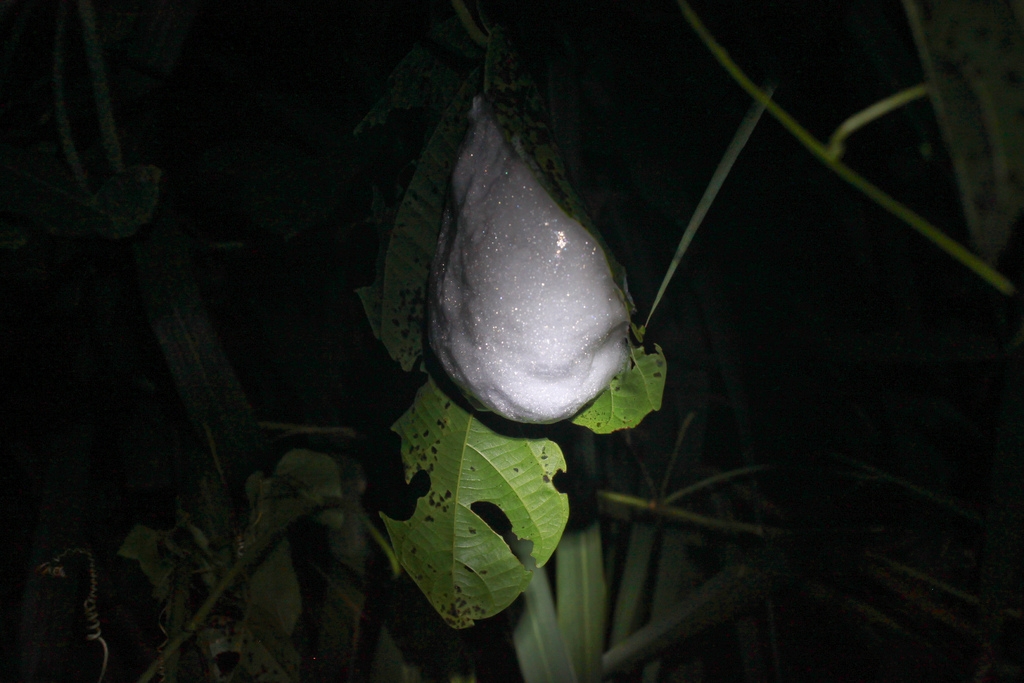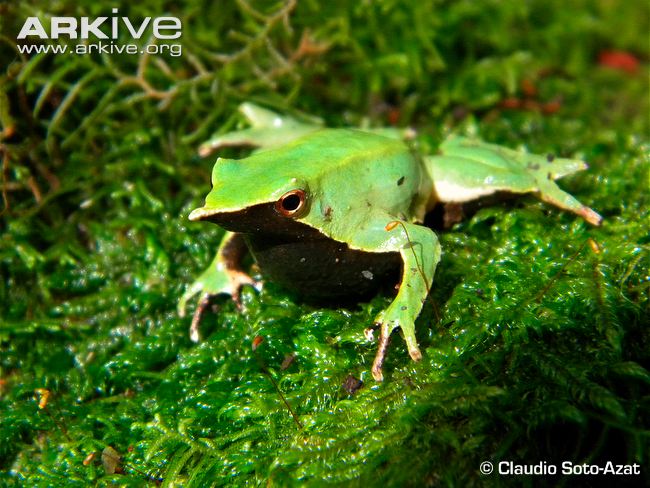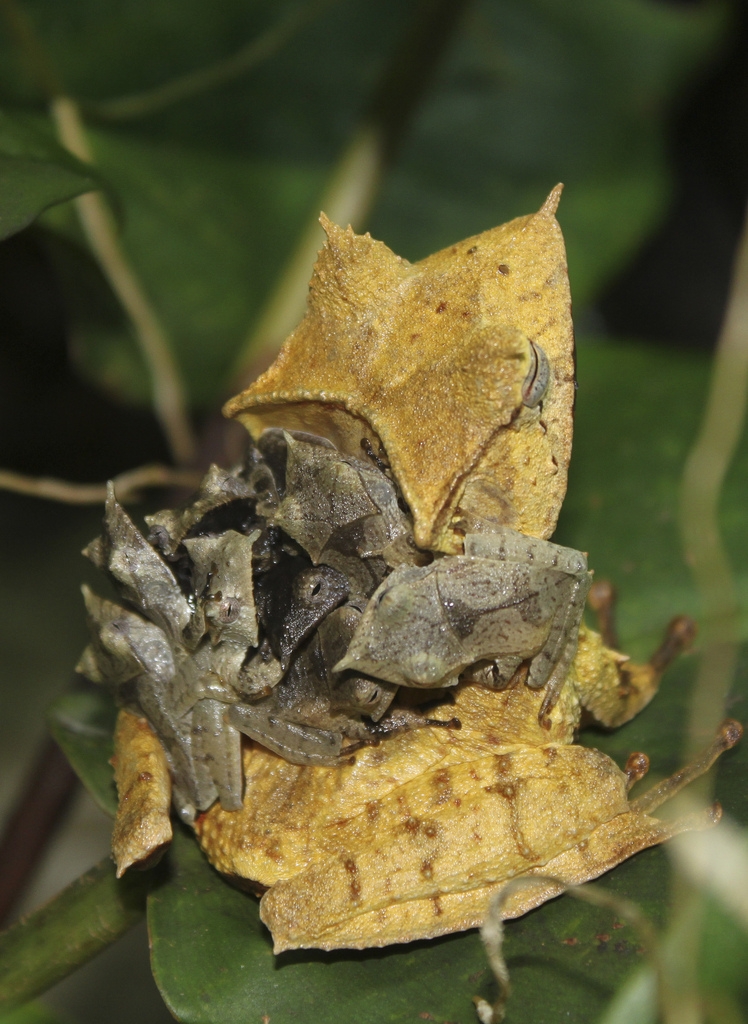
This species of poison dart frog is well known for its attentiveness to its children. (Photo by Mehgan Murphy, Smithsonian's National Zoo)
With Thanksgiving just past and Christmas around the corner, this is a time of year many people turn toward family. While frogs are not the most social of animals and certainly do not celebrate the holidays, they do have a wide range of ways to care for their young.
The vast majority of frogs and toads reproduce by laying eggs in streams, ponds, vernal pools, or any other body of water they can find in the spring. The American bullfrog (Rana catesbeiana) and spring peeper (Pseudacris crucifer) are two common examples native to the United States. In both species, males stake out territories on the edge of a pond and call loudly to attract females. Once they mate, the eggs are laid in or near the water. After this, mom and dad are basically out of the picture.
However, these tadpoles are perfectly capable of taking care of themselves. In some species, they gather in large groups, oftentimes with siblings. Amazingly, even in this mostly hands-off approach to parenting, family still comes first!
Now, we can head to some of the more dedicated parents of the amphibian world.
First up is a species of poison dart frog well known for their attentiveness to their children, the strawberry poison frog (Oophaga pumilio). This little frog is common in the rainforests of Central America, from Nicaragua to Panama. The eggs of the strawberry poison frog are not laid in the water so the males take up the duty of carrying water in their cloaca to keep the clutch of eggs moist. These dedicated fathers can even move around to take care of multiple clutches at the same time!
After one to two weeks, the eggs hatch and the female takes over care. She spreads out the tadpoles between small pools of water in bromeliads by carrying them on her back, giving each one its own pool. Finally, she will continue to care for the tadpoles by feeding them unfertilized eggs until they are large enough to begin metamorphosis.
Luckily, the strawberry poison frog is listed as a species of least concern by the IUCN because of its large and widespread population.
It cannot be said that all male frogs abandon their babies before they are adults. Darwin’s frog (Rhinoderma darwinii) is almost unique in the extraordinary effort males put into caring for their young.
After the eggs are laid and fertilized, the male stays around to guard the eggs. A few days before they hatch, he gulps them down into his vocal sac, where they will grow and develop all the way into adults. There are special glands in the male’s vocal sac that secrete food for up to 19 tadpoles that he may be carrying. Once they are old enough, the young hop out of dad’s mouth to start life on their own.
Darwin’s frog is currently listed as vulnerable by the IUCN due to habitat destruction in its native country of Chile.
As you can see, not all frogs take the hands-off approach our native species do in the United States. Some frogs are very dedicated parents. This season at dinner, ask yourself (or your family!): Are we really so different from frogs?
– Andrew Franks, Zoo New England





